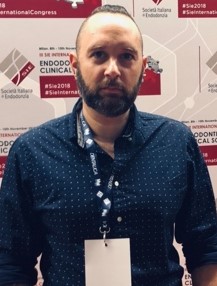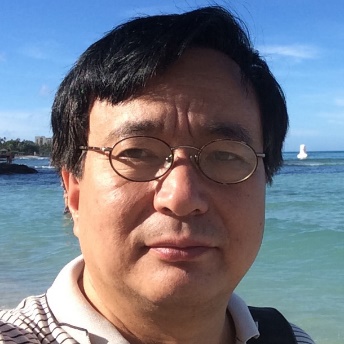Scientific Program
Keynote Session:
Title: Quantifying Coronal Tooth Discoloration Caused by Different Endodontic Materials
Biography:
Shlomo Elbahary, is a dentist, endodontic specialist, his main research field is in microbiology, endodontic materials and histology studies using confocal laser microscopy. His main interest and work is in pediatric dentistry. Is always searching for new methods and materials in endodontic in general and specific in pediatric dentistry. Shlomo is a senior lecturer and instructor in Tel Aviv school of dentistry for undergraduate students and in the postgraduate endodontic department specialty program.
Abstract:
Endodontic sealers, Bioceramic materials, gray and white mineral trioxide aggregate (GMTA, WMTA), have been shown to have high rates of success in various endodontic applications. A major drawback is their tendency to discolor teeth. Biodentine (BD), a recenlty developed bioceramic material, has been claimed not to discolor teeth. The aim of this studys was to compare tooth discoloration after applying different pulpotomy base materials (BD, GMTA and WMTA). Methods: ninety human fully developed permanent and primary incisors teeth were used in this study. Coronal access was achieved by a Tungsten Carbide drill, \and the pulp chambers were accessed and chemo-mechanically debrided. Each material was placed in the pulp chamber, up to the cervical sectioning level. All specimens were incubated at 37◦C and 100% humidity for 14 weeks and have been evaluated before the study and weekly. Color was assessed according to the CIE L*a*b* color space system. Results: The ∆E (delta E) of all experimental groups (GMTA, WMTA and BD) were significantly different from the control group at all time points. Color changes in the GMTA and WMTA groups showed significantly higher discoloration compared to BD group in the cervical part of the crown, since week 1. WMTA group showed significant discoloration in the cervical part as of week 1, and gradually increased over time. BD group showed no significant discoloration over time. GMTA group showed the most significant discoloration at week 1 and week 14 (P<0.05). Conclusions: both GMTA and WMTA pulpotomy materials may discolor tooth structure over time in an extracted primary anterior tooth model. When choosing bioceramic pulpotomy material, BD may be preferable, mainly in esthetic area.
A PHP Error was encountered
Severity: 8192
Message: trim(): Passing null to parameter #1 ($string) of type string is deprecated
Filename: pastconference/past-program-schedule.php
Line Number: 239
Backtrace:
File: /efsdata/meetingsint-com/application/views/pastconference/past-program-schedule.php
Line: 239
Function: trim
File: /efsdata/meetingsint-com/application/controllers/Pastconference.php
Line: 128
Function: view
File: /efsdata/meetingsint-com/index.php
Line: 317
Function: require_once
Title: Advanced Magnetic Separation Nanotechnology for Nuclear Waste Recycle
Biography:
Dr. Qiang is a full professor of physics and professor in the Nuclear Engineering Program at the University of Idaho, US. He is the chairman of Idaho Academy of Science and Engineering. He received his MS degree 1985 at the Harbin Institute of Technology and Ph.D. in1997 at the University of Freiburg, Germany. Dr. Qiang’s research focuses on magnetism and magnetic nanomaterials. He has studied magnetic nanoparticles and nanocomposites for more than 30 years, including synthesis of monodispersive nanoclusters and nanocluster-assembled composites; characterization of magnetic and optical properties as well as transport properties by conductivity, optics, susceptibility and theoretical investigation. He applies magnetic nanomaterials in energy, environmental and biomedical science and nanotechnology. Presently Dr. Qiang’s research interests are a) Nano-Nuclear Technology and magnetic separation nanotechnology for used nuclear fuel recycling; b) High temperature ferromagnetism and giant magnetoresistance of semiconductor oxide nanomaterials for spintronics; and c) Iron-based magnetic nanoparticles for cancer treatment and environmental remediation.
Abstract:
Nuclear energy is one of the best sources of clean energy. One major concern is the disposal of the used nuclear fuel, any process for its disposal needs to have a minimal impact on the environment. Globally plutonium and uranium recovery for MOX fuel is performed using the PUREX process. However, this comes with certain disadvantages such as the requirement for large quantities of separation reagents and the generation of significant volumes of secondary waste that might increase the threat of proliferation. With long term storage of used nuclear fuel, there is potential for contaminating ground water due to the performance of interim and long-term geologic storage containers. Novel magnetic nanosorbents-surface functionalized magnetic nanoparticles conjugated with specific metal chelators-has been developed for separation of metal ions from aqueous systems, which offers a simple, fast, effective, and environmentally benign technique in spent nuclear separation. The unique properties of magnetic nanoparticles (MNPs), such as their extremely small size and high surface area to volume ratio, provide better kinetics for the adsorption of metal ions from aqueous solutions. The high magnetic susceptibility of MNPs aids in an efficient separation of particles from waste solution. In this work, we demonstrated the separation of minor actinides using complex conjugates of MNPs with DTPA chelator. The uptake behavior of Am(III), Pu(IV), U(VI), and Np(V) from 0.1M NaNO3 solution was determined. The sorption results show the strong affinity of DTPA towards Am(III) and Pu(IV) by extracting 97% and 80% of actinides, respectively. Advanced magnetic separation nanotechnology proves an effective method for used nuclear fuel recycling as it is a simple, versatile, compact, and cost-efficient process that minimizes secondary waste and improves storage performance.
Oral Session 1:
- Advanced Nanomaterials
A PHP Error was encountered
Severity: 8192
Message: trim(): Passing null to parameter #1 ($string) of type string is deprecated
Filename: pastconference/past-program-schedule.php
Line Number: 354
Backtrace:
File: /efsdata/meetingsint-com/application/views/pastconference/past-program-schedule.php
Line: 354
Function: trim
File: /efsdata/meetingsint-com/application/controllers/Pastconference.php
Line: 128
Function: view
File: /efsdata/meetingsint-com/index.php
Line: 317
Function: require_once
Title: Nano-meso-macro: Hierarchical Superstructures synthesized in Bicontinuous microemulsions for electrocatalysis and SERS
Biography:
Margarita Sánchez-Domínguez received a Ph.D. in Physical Chemistry from University of Bristol in 2004. She was a postdoctoral researcher at Institute Charles Sadron (CNRS, Strasbourg, 2004-2006), and at the Institute of Advanced Chemistry of Catalonia (IQAC-CSIC, Barcelona, 2006-2010). She joined CIMAV Monterrey (México) in 2010. She has published around 70 papers, several book chapters, one book and several patents. Her research goal is to understand the interfacial and colloidal properties of surfactant systems with the aim of using them for applications related with materials science and industrial formulations, with a particular focus on the use of bicontinuous microemulsions as confined reaction media for the synthesis of plasmonic hierarchical superstructures for their use as SERS substrates and electrocatalysts. Other interests include drug delivery and stimuli-responsive surfactant systems.
Abstract:
Statement of the Problem: Hierarchical superstructures (HSSs) are 3-D structures with a significant improvement in some properties as compared to isolated nanoparticles. However, formation of HSSs has been conducted by intricate methods that usually involve synthesis of the building blocks and the assembly in superstructures in a second step. Methodology & Theoretical Orientation: As alternative one-pot procedure, we propose the use of bicontinuous microemulsions (BCME). The channels of BCMEs have a thickness in the nanometer scale. Both water and oil channels are continuous phases, having infinite lengths. Thus, it is feasible to imagine the growth of HSS inside them, as the narrow thickness of the channels will allow the formation of nanometer building blocks, whilst their interconnection allows for the self-assembly of these nanoparticles into macroscopic 3D networks. The use of BCME for the synthesis of inorganic nanomaterials is rare, in comparison to the use of W/O and O/W ME. When BCME were used, isolated and well dispersed NPs has been obtained, mostly using ionic surfactants and water-soluble precursors. In this investigation, we used BCME based on the nonionic system water/ Synperonic 91/5 /isooctane for the synthesis of Pt, PtCo3O4, PtCoNi, and Ag HSSs. The use of both water- and oil-soluble precursors were compared. Findings: HSSs resembling nanocorals, made by interconnected NPs or nanoneedles were obtained (Pt, PtCo, PtNi, PtCo3O4), both by chemical reduction and electrodeposition. These materials were explored as electrocatalysts. On the other hand, for Ag superstructures, it was necessary to add a stabilizer (sodium citrate) in order to form a Ag HSS, which was assessed as Surface Enhanced Raman Spectroscopy (SERS) substrate, resulting in analytical enhancement factors in the order of 109 for Rhodamine 6G. These results demonstrate the usefulness of employing certain BCME for HSSs synthesis of, although the concept is not universal to all BCMEs.
A PHP Error was encountered
Severity: 8192
Message: trim(): Passing null to parameter #1 ($string) of type string is deprecated
Filename: pastconference/past-program-schedule.php
Line Number: 354
Backtrace:
File: /efsdata/meetingsint-com/application/views/pastconference/past-program-schedule.php
Line: 354
Function: trim
File: /efsdata/meetingsint-com/application/controllers/Pastconference.php
Line: 128
Function: view
File: /efsdata/meetingsint-com/index.php
Line: 317
Function: require_once
Title: Ultraviolet Laser Lithography of Ceramic Micro Lattices for Electromagnetic Wave Modulations
Biography:
Soshu Kirihara is a doctor of engineering and a professor of Joining and Welding Research Institute (JWRI), Osaka University, Japan. In his main investigation “Materials Tectonics” for environmental improvements of “Geotechnology”, multi-dimensional structures were successfully fabricated to modulate energy and materials flows effectively. Ceramic and metal components were fabricated directly by smart additive manufacturing, design and evaluation (Smart MADE) using high power ultraviolet laser lithography. Original stereolithography systems were developed, and new start-up company “SK-Fine” was established through academic-industrial collaboration.
Abstract:
Dielectric ceramic components were fabricated by ultraviolet laser lithography. 2D cross sections were created through dewaxing and sintering by UV laser drawing on spread resin paste including ceramic nanoparticles, and 3D composite models were sterically printed by layer laminations. As the row material of the lithography, ceramic nanoparticles from 500 nm in average diameters were dispersed in to liquid resins from 50 % in volume fraction. The resin paste was spread on a glass substrate at 50 μm in layer thickness by a mechanically moved knife edge. An ultraviolet laser beam of 355 nm in wavelength was adjusted at 10 μm in spot diameter and scanned on the pasted resin surface. Irradiation power was changed from 600 to 700 mW for enough solidification depth for 2D layer bonding. Scanning speed was changed from 50 to 100 mm/s to create fine lattice structures as shown in Figs. 1 (a), (b) and (c). The half wavelength of the incident ultraviolet ray should be comparable with the nanoparticles gaps in the resin paste, therefore the dewaxing and sintering will be realized through the electromagnetic waves resonations and localizations as shown in Fig. 1 (c). Through the layer lamination, the 3D titania structures with 97% in volume fraction were successfully fabricated. The titania crystal structure was analyzed as dual phase of anatase and rutile. After the reheating treatment at 1350 °C for 2 hs, titania components with rutile phase was obtained. The linear shrinkage through the sintering was < 1 %. The diamond lattice with four coordination number of 270 μm in periodicity could diffract electromagnetic waves of 0.25 to 0.45 THz, and exhibit forbidden gaps in transmission spectra for all spatial directions. The dielectric lattice especially is called photonic crystal.
A PHP Error was encountered
Severity: 8192
Message: trim(): Passing null to parameter #1 ($string) of type string is deprecated
Filename: pastconference/past-program-schedule.php
Line Number: 354
Backtrace:
File: /efsdata/meetingsint-com/application/views/pastconference/past-program-schedule.php
Line: 354
Function: trim
File: /efsdata/meetingsint-com/application/controllers/Pastconference.php
Line: 128
Function: view
File: /efsdata/meetingsint-com/index.php
Line: 317
Function: require_once
Title: Carbon Dots as Versatile Drug Nanocarriers in Modern Medicine
Biography:
Roger M. Leblanc received his B. S. in chemistry in 1964 from Université Laval, Canada, and Ph. D. in physical chemistry in1968 from the same university. He was appointed as professor in 1994 and chair of Department of Chemistry at University of Miami from 1994 to 2002 and again from 2013 to present. He was also one of the three editors of Colloids and Surfaces B: Biointerfaces from 1998 to 2013. He has published 520 scientific articles in peer-reviewed journals. As a professor, he has supervised more than 100 M.S. and Ph.D. students.
Abstract:
A PHP Error was encountered
Severity: 8192
Message: trim(): Passing null to parameter #1 ($string) of type string is deprecated
Filename: pastconference/past-program-schedule.php
Line Number: 354
Backtrace:
File: /efsdata/meetingsint-com/application/views/pastconference/past-program-schedule.php
Line: 354
Function: trim
File: /efsdata/meetingsint-com/application/controllers/Pastconference.php
Line: 128
Function: view
File: /efsdata/meetingsint-com/index.php
Line: 317
Function: require_once
Title: Nanotechnology for solar energy systems
Biography:
Dr. Mohsen Sheikholeslami works at the Babol Noshirvani University of Technology’s Department of Mechanical Engineering in Iran. He is head of Renewable energy systems and nanofluid applications in heat transfer Laboratory at Babol Noshirvani University of Technology. His research interests are Nanofluid, CFD, simulation, Mesoscopic modeling, Nonlinear Science, Magnetohydrodynamic, Ferrohydrodynamic, Electrohydrodynamic and Heat exchangers. He has written several papers and books in various filed of mechanical engineering. He is first scietist who developed new numerical method (CVFEM) and he published reference book with title: " Application of Control Volume Based Finite Element Method (CVFEM) for Nanofluid Flow and Heat Transfer". According to the reports of Thomson Reuters (Clarivate Analytics), he has been selected as a Web of Science Highly Cited Researcher (Top 0.01%) in 2016, 2017 and 2018.
Abstract:
Because of the grown demand for the energy and also grown price of materials, it is significant to present low price and energy efficient materials. This should be said that the amount of fossil fuels throughout the world is decreasing because of grown energy demand. To relate the energy demand, it is imperative to rely on the solar energy, as it is renewable energy, freely available in the world. Recently, the temperature of the earth's atmosphere is growing which can be used and then converted to beneficial energy in the shape of heating of water. One of the techniques is using a flat plate collector. One of the innovative passive methods which is used by several researchers is Nanotechnology. Different nanomaterials can be used for solar applications and among them, Aluminum oxide has attracted the attention of researchers. Utilizing twisted tapes can generate swirls and disturb boundary layers, thus this technique is the most extensively-employed one to improve convection.







